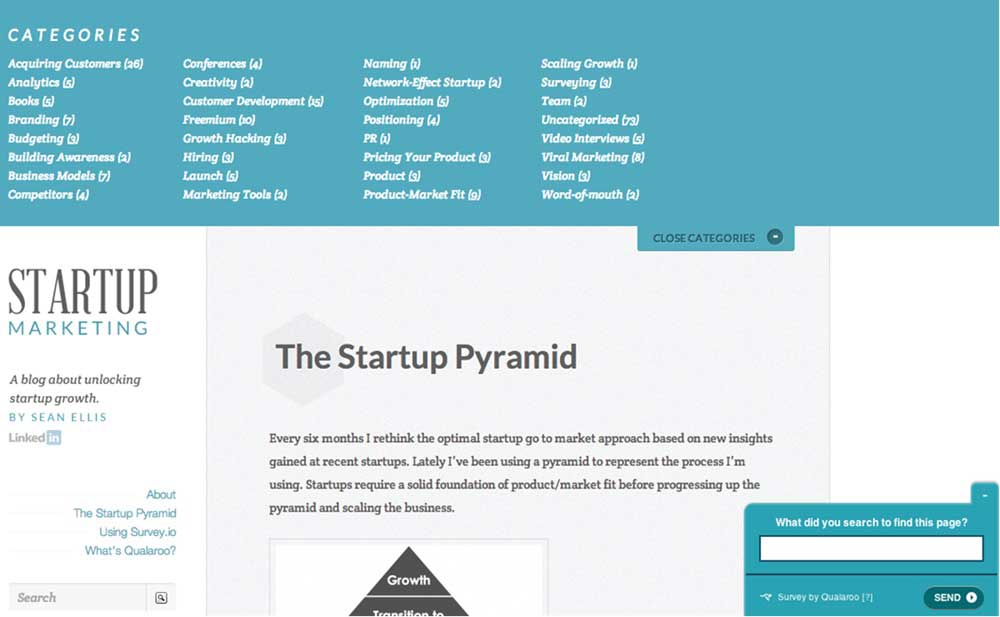In part two of this series, I discussed how to use insights gleaned from analytics to identify opportunities for conversion rate improvement in your acquisition funnels. In today's installment, I want to help you go from analytic-based insights—which is way ahead of the curve for most testing plans—to the rarefied air of understanding visitor intent.
Intent is at the heart of conversion rate optimization. How do you effectively harvest intent from the Internet?
Your potential customers are seeking for solutions to problems you solve. When you can create strong alignment between the value of your offering and the intent of the visitor, you have your best chance at conversion success.
In the past, people have used various proxies to determine intent. Search keywords, for example, are a popular proxy; time on site might be another—and so on. But for all of the benefits of those proxies, they can't actually speak for your visitors.
To really understand your visitors' intentions, you need to get out of the building to hear directly from them. To get out of the building means to get out from under your own preconceptions about what your visitors want, and to talk to your customers and visitors to learn what they're really trying to accomplish when they visit your site.
Once that's known, you can optimize things like on-site messaging—and ultimately product features and experience—to meet the needs of your site visitors. You align your offering to best meet their intentions, creating win-win scenarios that improve your conversion rates.
Surveys are a great way to determine intent. They allow you to quickly and efficiently target and question your customer base and site visitors to provide real feedback based on which you can optimize.
Three types of surveys are effective in unearthing intent and needs: custom, user satisfaction (or net promoter), and on-site.
Custom Surveys. These are surveys you can deploy via email to your customers and users. Survey Monkey and PollDaddy are two of the many options you have. The key is to segment your user base before and after sending, so you can learn how responses vary by particular customer or user types. What responses correlate with your most valuable customers, etc.? What is the intent of the customers who leave without signing up? Where is the missed connection?
Don't make the mistake of rolling all responses together. That averaged data will provide little detailed signal for optimization efforts. Instead, you'll want to find why people love you and why people leave you, and what users in each group have in common, so you can optimize around those key factors.
User Satisfaction and Net Promoter Surveys. These surveys are specifically designed to determine how likely your user base is to refer you to their network. Products like Survey.io provide you with a survey template that helps you harvest those core insights from your user base.

Sample survey from survey.io
Satisfaction surveys let you know how valuable you are to your customers. Is your product or service a must-have product or just a nice-to-have? Could your users live without you or would they be crushed if you disappeared tomorrow?
When you have a large portion of your user base rating you as a must-have, you're onto something. When your overall satisfaction is lower, you know there is optimization to be done on the product itself, before marketing optimizations will really begin to matter.
On-Site Surveys. These surveys give you the opportunity to identify intent from visitors while they are on your site. They're powerful opportunities to ask questions "in the moment" to understand visitor needs.
Products like Qualaroo let you add surveys to pages and configure the questions and display logic to help you uncover insights to focus your optimization efforts. Why are these users on this page and how did they get here are questions that can be answered via an on-site survey.
You can also determine whether visitors have found what they're looking for or if there is confusion about your product, service, or pricing. Users who are in the moment may provide more accurate feedback than those who need to recollect an event that occurred a few days or weeks in the past.

Startup Marketing blog uses Qualaroo to learn not only which keywords are driving traffic but also what the visitor was actually looking for with that search query.
You can use these surveys to target users from particular traffic sources or on particular pages. If you have a landing page that receives a lot of traffic but which also has a high bounce rate, you can deploy a survey to that particular page to learn about why the visitors are there—and, equally as important, why they're leaving without taking any additional action.
* * *
Hopefully, the value of understanding user intent in a conversion rate optimization project is clear. By tying the analytics together with qualitative feedback, you're able to create hypotheses about what improvements will work based on firsthand knowledge of both what your visitors are doing and what they were actually trying to accomplish.
With those insights gained, we can now move into actually implementing those insights in a meaningful way. We'll cover that in the next installment.
Articles in this series
Article 1: How to Build an Effective Conversion Rate Optimization Plan
Article 2: How to Uncover Confusion in Your Conversion Funnel
Article 3: How to Drive Conversion Rate by Understanding Visitor Intent




